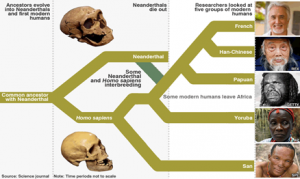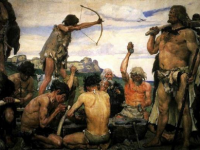Posted May 10, 2010 by R. C. Camphausen
 An international team of scientists have successfully sequenced the Neanderthal genome, and the evidence shows that humans in Europe, Asia and Papua New Guinea carry Neanderthal genes – while African peoples are 100 percent human.
An international team of scientists have successfully sequenced the Neanderthal genome, and the evidence shows that humans in Europe, Asia and Papua New Guinea carry Neanderthal genes – while African peoples are 100 percent human.
An international team led by scientists from the respected Max Planck Institute for Evolutionary Anthropology in Leipzig have successfully sequenced 65 percent of the Neanderthal genome. It is the first time that the genetic code of an extinct human relative has been decoded, and the present announcement came after 4 years of diligent study.
The results of this study, published Thursday last week, are similar to the findings reported (and foretold) last month here in Digital Journal, but the final publication of this study by researchers Svante Pääbo, Adrian Briggs and colleagues truly shows that years of denial about interbreeding between the two primates should now really come to an end.
One of the co-authors of the scientific paper, Adrian Briggs, stated unambiguously that the DNA of “Humans and Neandertals are 99.5 percent identical,” as is quoted in the English language section of Der Spiegel.
Better yet, and a blow to Caucasian and Asian racists, the comparison of the human and Neanderthal genome makes it clear that it is only Africans who are 100 percent Homo sapiens, while in European (including American and Australian settlers) and Asian populations one can find up to 4 percent DNA stemming from the archaic and often maligned Neanderthal species – a hominid that went extinct more than 20,000 years ago. A graphic designer at the BBC has transformed this information into a surprising graphic everyone should take a look at.
Meanwhile, the team keeps working in order to isolate the last 35 percent of the genome as well, and perhaps we’ll see even more interesting revelations in the future.
Detractors remain, of course, especially since archeologists have until now come to different conclusions and have a different timetable when it comes to human evolution. A New York Times article from May 6 gives voice to these two ways of thinking.



